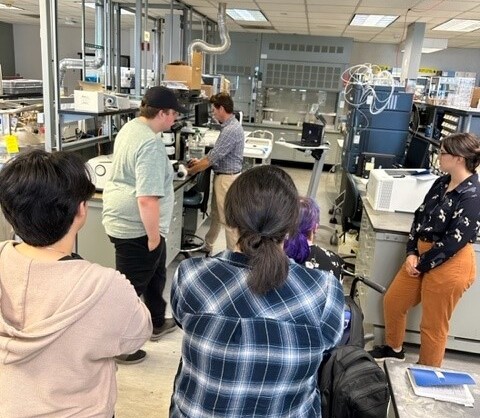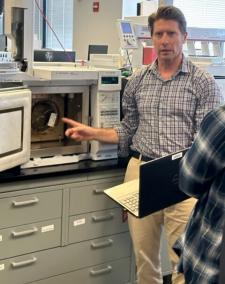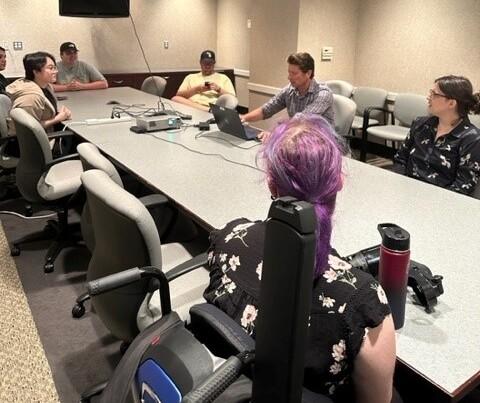ORA's Detroit Laboratory and University of Michigan Students Connect for Lab Tour
By Dawn Pyant
Truchan at ORA's Detroit Medical Products Laboratory
A Lab with Many Crucial Capabilities
The FDA opened its Detroit-based laboratory in 1959 and moved to its current location in 2003. Michael Truchan, a chemist at the lab, who generously helped lead the visit, provided the budding pharmacists with an overview of the lab’s various program areas, including Shelf-Life Extension, Drug Quality Sampling and Testing, Health Fraud, Bioresearch Monitoring, and Cooperative Research and Development Agreements.
“Every day I see the importance of our work,” Truchan told the students. “We're here to protect the public.”
He went on to share real-life examples of how ORA's Detroit lab has advanced public health.
During the COVID-19 pandemic, for instance, the sudden boost in hand sanitizer usage that resulted in shortages of the product led the FDA to formulate a policy for the temporary preparation of certain alcohol-based hand sanitizer products.
But some of those products proved substandard and even toxic, manufactured with cheaper and unsafe forms of alcohol, like methanol, and other adulterants.
The Detroit laboratory, among other ORA medical products laboratories, quickly responded, screening incoming suspicious products for harmful adulterants.
In June and July of 2019, the Detroit lab also worked steadily on the EVALI outbreak among adolescents in the Midwest who had experienced lung injury or harm, including severe pulmonary disease, as a result of using vaping products.
EVALI, which stands for E-Cigarette, or Vaping Product, Use Associated Lung Injury, is the term used to describe the lung damage or disease that can develop due to vaping.
ORA labs, including the Detroit laboratory along with the Forensic Chemistry Center in Cincinnati, Ohio, are dedicated and proud to support the CDC and state and local public health partners in investigations aimed at protecting young people.
*For more information, including an FDA warning that people NOT use THC-containing vaping products, see Lung Injuries Associated with Use of Vaping Products.



